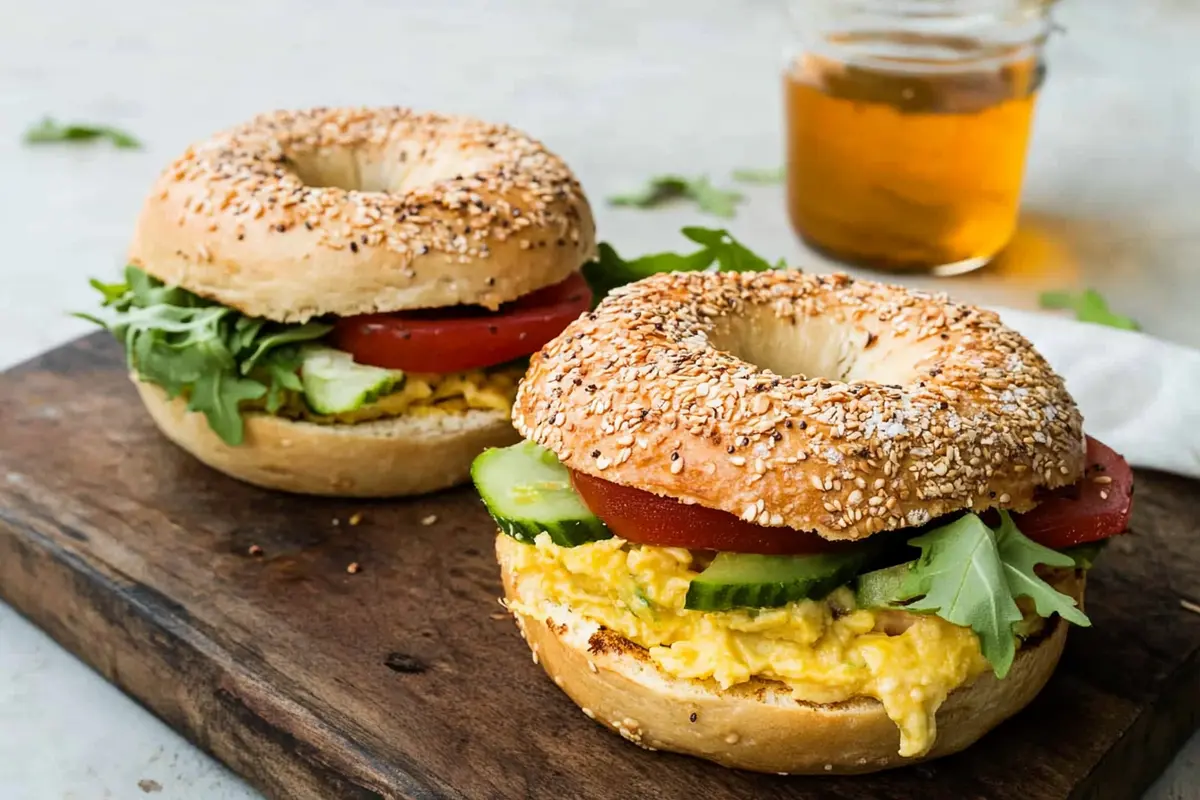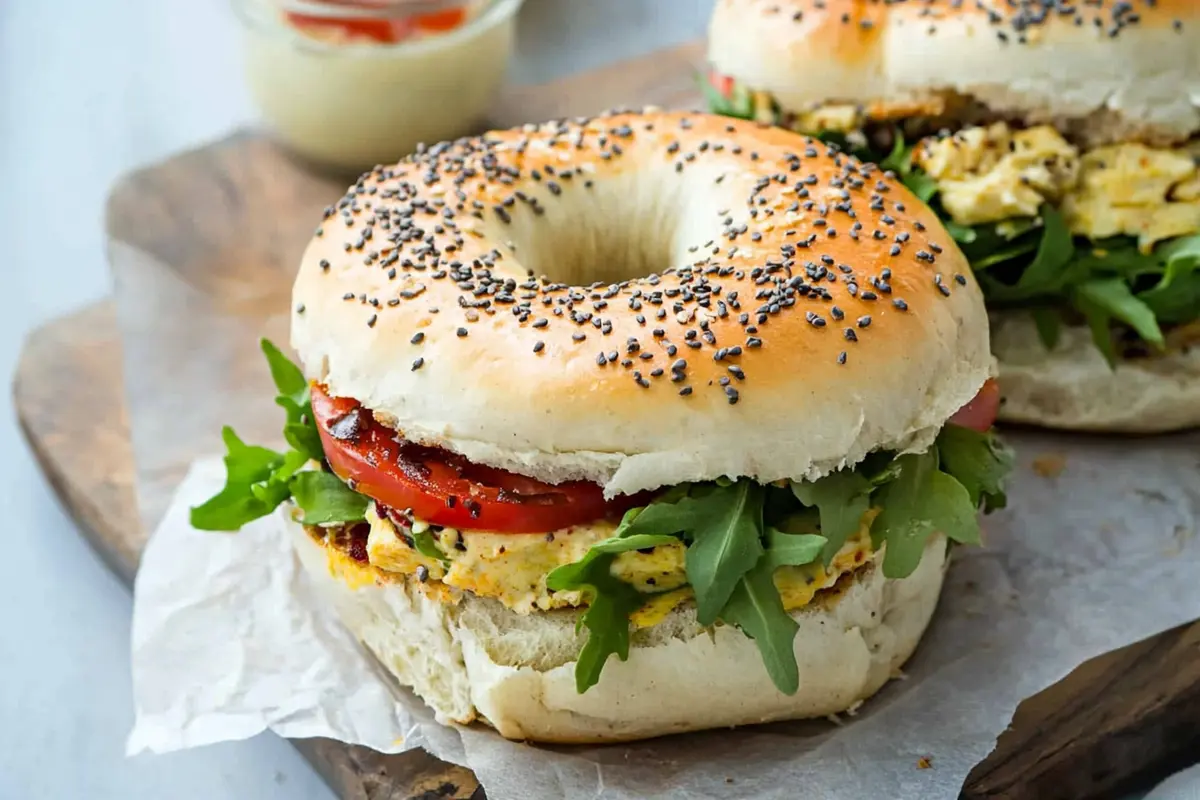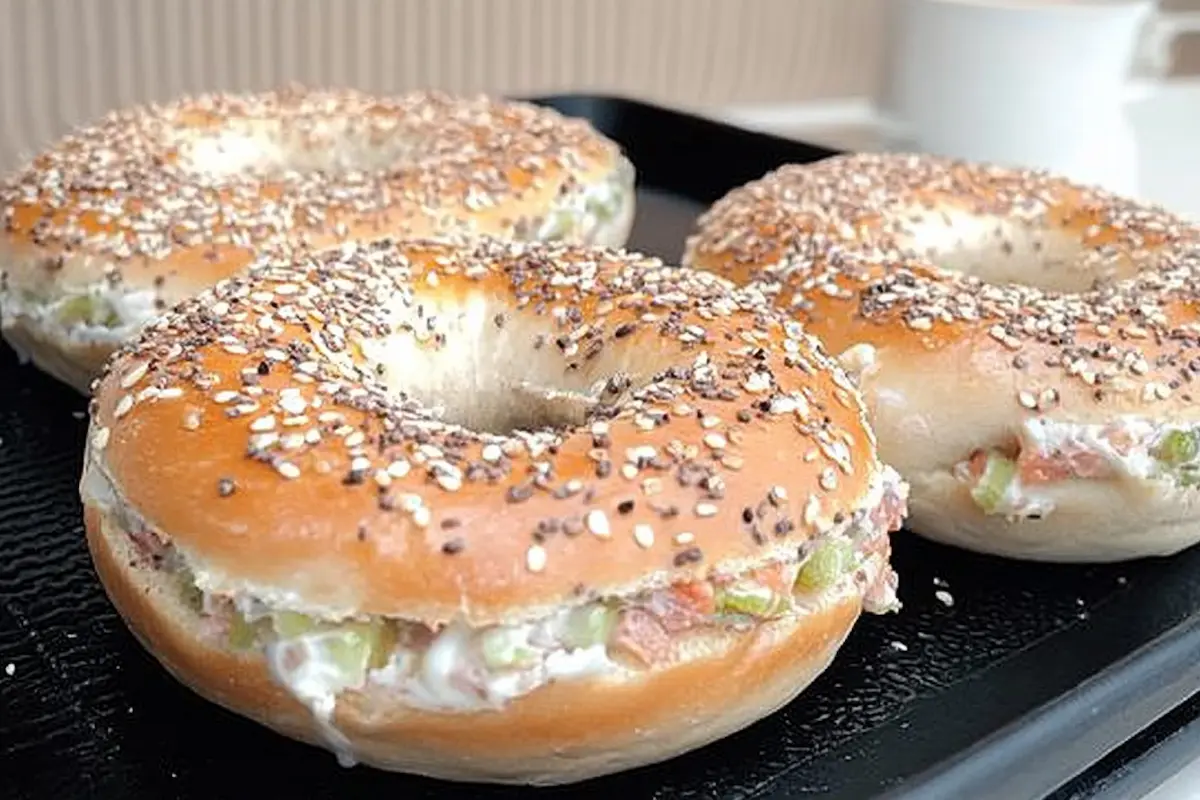Bagels are more than just a breakfast food—they’re a cultural phenomenon. From cozy morning rituals to busy commutes, bagels seem to fit effortlessly into every lifestyle. But why are bagels so popular for breakfast? Let’s dig into the history, nutritional benefits, and delicious versatility that have cemented their spot in our morning routines. 🥯

The Popularity of Bagels in Breakfast Culture
A Brief History of Bagels
Ever wondered where bagels came from? These chewy, round breads have a fascinating origin story that dates back to 17th-century Poland. Bagels were initially baked as a symbol of good luck for new mothers and quickly gained popularity among Jewish communities.
By the late 19th century, Jewish immigrants brought bagels to America, and they soon became a staple in cities like New York. Today, bagels are synonymous with urban breakfast culture—whether you’re grabbing one from a deli or toasting it at home.
“The history of bagels isn’t just about food; it’s about tradition, community, and resilience.”
How Bagels Became a Breakfast Staple
Why breakfast? Bagels are quick, satisfying, and customizable—everything you want in a morning meal. Their dense, chewy texture makes them filling, while their neutral flavor pairs perfectly with both sweet and savory toppings. Plus, the rise of bagel shops and cafes in the 20th century made them a go-to choice for busy mornings.
Nutritional Benefits of Eating Bagels in the Morning
Energy-Boosting Properties of Bagels
Bagels are packed with carbohydrates, which are your body’s primary source of energy. Starting your day with a bagel can give you the fuel you need to tackle your morning tasks. Feeling a little sluggish? One bite of a warm, toasted bagel can help you power through.
Here’s a quick look at the nutritional profile of a standard plain bagel:
| Nutrient | Amount (per 100g) |
|---|---|
| Calories | 250 |
| Carbohydrates | 49g |
| Protein | 9g |
| Fat | 1g |
| Fiber | 2g |
Adding toppings like cream cheese or peanut butter boosts protein and healthy fat intake, making your bagel a balanced meal.
Are Bagels a Healthy Breakfast Option?
This depends on how you prepare them. A plain bagel with nutrient-rich toppings like avocado, eggs, or almond butter can be quite healthy. However, piling on sugary spreads or opting for bagels made with refined flour might not be the best choice. Moderation is key—think of bagels as a blank canvas for a nutritious masterpiece.
The Versatility of Bagels for Breakfast
Savory vs. Sweet Bagel Options
Bagels are like chameleons—they can adapt to your cravings, whether you’re in the mood for something savory or sweet. Craving a hearty breakfast? Try a bagel with smoked salmon, cream cheese, and capers. Got a sweet tooth? Slather on some honey, Nutella, or jam for a delightful treat.
Some popular savory options:
- Egg and cheese bagel sandwiches 🥚🧀
- Avocado and tomato bagels 🥑🍅
- Bacon and cream cheese combos 🥓
And for sweet lovers:
- Cinnamon raisin bagels with butter
- Bagels topped with banana slices and honey 🍯🍌
- Strawberry bagels with whipped cream 🍓
Common Bagel Toppings and Pairings
The beauty of bagels lies in their ability to pair with just about anything. Want something light? Go for a smear of butter. Need protein? Add scrambled eggs or turkey slices. Bagels also go wonderfully with coffee, tea, or even a fresh smoothie.
“Bagels are the ultimate breakfast canvas—top them with anything, and they’ll deliver.”
Cultural and Regional Influences on Bagel Consumption
Bagels Across the World: Variations and Traditions
While bagels are often associated with New York, variations exist worldwide. In Montreal, bagels are sweeter and baked in wood-fired ovens, giving them a unique flavor. Meanwhile, in Israel, bagels are served with za’atar seasoning for a Middle Eastern twist.
The Role of Bagels in American Breakfast Culture
In the U.S., bagels are deeply ingrained in breakfast culture. They’re the star of countless brunch menus and the cornerstone of “bagel and coffee” breakfast routines. Bagels aren’t just food—they’re part of the American identity, symbolizing convenience and comfort.

Common Myths About Eating Bagels for Breakfast
Are Bagels Too Carb-Heavy for Breakfast?
Ah, the carb debate! It’s a common misconception that bagels are “too heavy” for breakfast because of their carb content. While it’s true that bagels are carb-dense, carbohydrates aren’t the enemy. In fact, they’re essential for brain function and energy. The key is balance—pairing your bagel with protein and healthy fats can help you feel fuller for longer.
For example, instead of just cream cheese, add smoked salmon or a poached egg. This combo provides the right macronutrients to keep hunger at bay without causing a mid-morning crash.
“Carbs are like fuel for your body—bagels give you the jumpstart you need.”
Gluten-Free Bagels: A Healthier Alternative?
Gluten-free diets are all the rage, but do gluten-free bagels automatically make your breakfast healthier? Not necessarily. While they’re a great option for those with celiac disease or gluten sensitivity, many gluten-free bagels are made with refined starches, which can lack fiber and nutrients.
If you’re going gluten-free, look for bagels made with nutrient-rich flours like almond or chickpea flour. They offer more fiber and protein, making your breakfast more satisfying.
The Role of Bagels in Modern Dietary Trends
How Bagels Fit Into High-Protein Diets
Protein lovers, rejoice! Bagels aren’t just for carb enthusiasts. With a little creativity, you can turn a regular bagel into a protein-packed breakfast. Here’s how:
- Opt for bagels made from high-protein flours like spelt or quinoa.
- Add protein-rich toppings like eggs, smoked salmon, or turkey slices.
- Try spreads like hummus or Greek yogurt instead of butter.
Bagels are versatile enough to fit into high-protein diets without sacrificing taste or convenience.
Vegan and Plant-Based Bagel Options
Vegans, don’t feel left out! Bagels are naturally plant-based, as they’re made from simple ingredients like flour, water, and yeast. The real fun comes with toppings. Popular vegan choices include:
- Avocado with cherry tomatoes 🌱🍅
- Peanut butter with chia seeds 🥜✨
- Vegan cream cheese with cucumber slices 🥒
With the rise of plant-based diets, many bakeries now offer vegan bagel varieties like spinach, sundried tomato, and beetroot.
Challenges of Eating Bagels for Breakfast
Portion Control: Managing Bagel Serving Sizes
Bagels can be deceptively large. Did you know a single deli bagel can be the equivalent of four slices of bread? That’s a lot of calories in one sitting. Portion control is key. Instead of eating a whole bagel, try slicing it in half and pairing it with a side of fruit or yogurt.
Another tip? Opt for mini bagels if you’re craving one but don’t need a full serving. They deliver all the flavor in a more manageable size.
Finding the Best Quality Bagels
Not all bagels are created equal. Store-bought bagels often contain preservatives and artificial flavors, while freshly baked ones have that authentic, chewy texture we all love.
If you want the best bagel experience, visit a local bakery or make your own at home. Homemade bagels might seem intimidating, but they’re surprisingly simple to prepare. All you need is flour, yeast, water, and a little patience.
“A fresh bagel is worth the extra effort—it’s like a warm hug for your taste buds.”
Solutions to Common Bagel-Related Breakfast Problems
How to Keep Bagels Fresh for Longer
Have you ever bought a dozen bagels only to find them stale a day later? Keeping bagels fresh can be a challenge, but here are a few hacks:
- Freeze them: Slice your bagels before freezing so you can toast them directly from the freezer.
- Store them properly: Keep bagels in an airtight bag at room temperature for up to two days.
- Reheat smartly: A quick toast can bring even slightly stale bagels back to life.
Creative Ideas for Leftover Bagels
Don’t toss those leftover bagels! They can be repurposed into a variety of dishes, such as:
- Bagel croutons: Dice and toast them for crunchy salad toppings.
- Bagel chips: Slice thinly, bake, and enjoy as a snack with dips.
- Bagel bread pudding: Turn old bagels into a sweet or savory casserole.
Bagels are too versatile to waste, so let your creativity shine!

Why Bagels Remain a Breakfast Favorite
The Emotional and Social Appeal of Bagels
Bagels are more than food—they’re a ritual. Whether it’s a Sunday brunch with friends or a quick bite on your way to work, bagels create moments of connection. Their comforting, chewy texture feels like home, and their customizable nature means there’s something for everyone.
Plus, bagels are inherently social. Sharing a platter of bagels and spreads is a surefire way to bring people together. Who can resist a lively bagel bar with endless topping options?
Bagels in Cafes and Morning Routines
Bagels have found their place in bustling coffee shops and cafes, where they pair perfectly with a steaming cup of coffee. Whether you’re a student cramming for an exam or a professional rushing to a meeting, a bagel is the ideal grab-and-go option.
Their portability and simplicity make them a staple in morning routines. Need breakfast on the go? Bagels have your back.
Conclusion: The Everlasting Appeal of Bagels for Breakfast
Bagels aren’t just a food; they’re an experience. From their rich history to their modern-day versatility, it’s easy to see why they’ve become a breakfast icon. Whether you’re indulging in a classic cream cheese bagel or experimenting with new toppings, there’s no denying their charm.
So, why do people eat bagels for breakfast? Because they’re delicious, adaptable, and deeply woven into the fabric of our lives. 🥯
FAQs
What is the difference between a bagel and a better bagel?
A traditional bagel is made with refined flour, giving it that classic chewy texture. A “better bagel,” however, usually refers to a healthier version that incorporates whole grains, high-protein flours, or alternative ingredients like almond or chickpea flour. These “better bagels” often have added nutrients, more fiber, and fewer empty calories, making them a great option for health-conscious eaters.
Why do people eat bagels for breakfast?
Bagels are popular for breakfast because they’re quick, filling, and versatile. They can be paired with endless toppings, from cream cheese to avocado, satisfying both sweet and savory cravings. Plus, their carb content provides an excellent energy boost to kickstart the day, making them a convenient and delicious morning option.
Are bagels healthier than croissants?
It depends! Bagels are generally lower in fat than croissants, as croissants are made with layers of butter, giving them their flaky texture. However, bagels can be carb-heavy, especially if they’re large. If you’re comparing a plain bagel with a plain croissant, the bagel is often the better choice for sustained energy, while the croissant may feel more indulgent due to its buttery richness.
Are better bagels really low carb?
“Better bagels” often include low-carb versions, but not all of them are. Low-carb bagels are typically made with almond flour, coconut flour, or other alternative ingredients to reduce carb content. If you’re aiming for low carb, check the nutrition label or opt for specially marketed low-carb bagels to ensure they align with your dietary goals.
